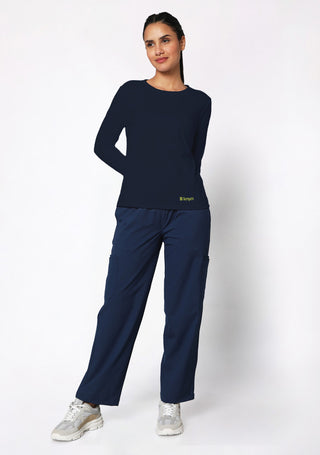Infection control is a complex, multi-layered effort requiring dedication, awareness, and the right tools. Medical aprons, though simple in design, are indispensable in protecting healthcare workers and patients alike. By acting as a physical barrier against contaminants, supporting hygiene protocols, and reducing cross-contamination risks, they play a pivotal role in maintaining the safety and integrity of healthcare environments.
As healthcare systems continue to prioritize patient and worker safety, the strategic use of medical aprons — along with comprehensive infection control practices — will remain fundamental. In the battle against infectious diseases, sometimes it’s the simplest defenses that prove the most vital.
The Role of Medical Aprons in Infection Control
Medical aprons are simple, yet highly effective barriers worn over the clothing of healthcare workers. Their primary purpose is to protect both the wearer and the patient from cross-contamination. In clinical environments, where exposure to bodily fluids, blood, excretions, and contaminated surfaces is frequent, aprons serve as the first line of defense.
By wearing medical aprons, healthcare workers significantly reduce this risk. After each procedure or patient interaction, disposable aprons can be removed and discarded, minimizing the chance of pathogen spread. Even washable, reusable aprons, when properly disinfected between uses, serve the same vital function.
How Medical Aprons Contribute to Infection Prevention?
Barrier Protection
The fundamental role of a medical apron is to act as a physical barrier. It prevents blood, fluids, and other potentially infectious materials from reaching the wearer’s skin and clothing. This is particularly important in environments where patients are immunocompromised or dealing with contagious diseases.
Reduction of Cross-Contamination
Cross-contamination is one of the primary ways infections spread in healthcare settings. When a healthcare worker’s clothing becomes contaminated, it can inadvertently transfer pathogens to other patients, surfaces, or colleagues. Aprons provide a removable protective layer, reducing the risk of spreading infections from patient to patient.
Support for Standard and Transmission-Based Precautions
Medical aprons support both standard precautions (practices used with all patients to prevent infection spread) and transmission-based precautions (practices for patients known or suspected to be infected with highly transmissible pathogens). Whether dealing with contact, droplet, or airborne precautions, aprons are a recommended component of PPE protocols.
Enhancing Worker Safety
Healthcare workers are at constant risk of exposure to infectious agents. Wearing aprons, along with other PPE such as gloves, masks, and face shields, ensures that workers are protected, maintaining a safer working environment and boosting staff confidence and morale.
Comfort meets style. Explore All Women's Scrubs and discover the perfect fit for your busy day.
Types of Medical Aprons and Their Applications
Medical aprons come in various types and materials, each suited to specific clinical needs:
Disposable Aprons
Usually made of lightweight polyethylene, disposable aprons are intended for single use. They are ideal for short procedures or tasks with a lower risk of fluid exposure. After use, they are simply discarded, preventing contamination risks associated with handling or laundering.
Reusable Aprons
Typically constructed from more durable materials like vinyl or rubber, reusable aprons are used in settings where higher fluid resistance is necessary, such as in surgical suites or emergency rooms. These aprons must be properly disinfected after each use to maintain their protective qualities.
Lead Aprons
Specialty aprons made of lead are used during procedures involving radiation, such as X-rays. While their primary role is radiation protection, maintaining their cleanliness also prevents them from becoming sources of infection.
Fluid-Resistant and Fluid-Impermeable Aprons
In environments with high exposure to blood and bodily fluids, fluid-resistant or impermeable aprons are recommended. They provide superior protection against leaks and splashes, safeguarding both clothing and skin.
Proper Use of Medical Aprons: Best Practices
For medical aprons to be effective in infection control, proper use is essential. Here are key best practices:
-
Correct Donning and Doffing: Aprons should be put on carefully before patient contact and removed immediately after. Removal should avoid contact with contaminated surfaces.
-
Hand Hygiene: Hands should be washed or sanitized before and after using aprons to prevent transferring pathogens from the apron to other surfaces or parts of the body.
-
Appropriate Disposal: Disposable aprons should be discarded in designated biohazard waste bins after use. Reusable aprons must undergo appropriate cleaning and disinfection processes.
-
Situational Use: Aprons should be used based on the anticipated exposure. For example, for minor contact procedures, a standard disposable apron may suffice, while for surgeries, a full-body fluid-resistant gown may be necessary.
Challenges and Considerations
Despite their simplicity, the consistent use of medical aprons faces challenges:
-
Compliance: Some healthcare workers may neglect to wear aprons, especially in fast-paced environments. Continuous training and awareness campaigns are needed to reinforce their importance.
-
Environmental Impact: The widespread use of disposable aprons contributes to medical waste. Institutions must balance infection control priorities with sustainability goals, perhaps by investing in eco-friendly options or more reusable PPE.
-
Cost: High-volume usage of disposable aprons can be financially burdensome for healthcare facilities, particularly in resource-limited settings. Strategic procurement and budgeting are necessary.
Tired of stiff, uncomfortable scrubs? Order the best jogger scrubs here and experience the difference.
Aprons as Part of a Broader Infection Control Strategy
Medical aprons are not standalone solutions but components of a comprehensive infection control plan. They work synergistically with other measures such as:
-
Personal Hygiene: Regular hand washing remains the most important step.
-
Other PPE: Gloves, masks, face shields, and gowns all play vital roles.
-
Environmental Cleaning: Surfaces and equipment must be regularly disinfected.
-
Vaccination Programs: Immunization of healthcare workers reduces disease transmission.
-
Training and Protocols: Ongoing education ensures staff stay updated on best practices.
The Future of Medical Aprons and Infection Control
With advancements in material sciences, newer forms of medical aprons are being developed. Some incorporate antimicrobial coatings, biodegradable materials, or improved designs for comfort and ease of use. These innovations aim to further enhance infection control while addressing sustainability and cost-effectiveness.
Moreover, the experience of global pandemics like COVID-19 has emphasized the critical importance of even basic PPE like aprons. As the healthcare industry continues to adapt, the humble medical apron will remain a key piece in the puzzle of infection prevention.














